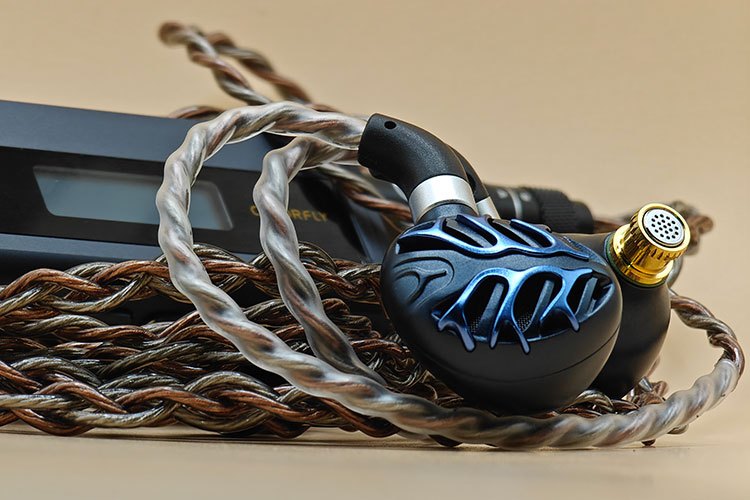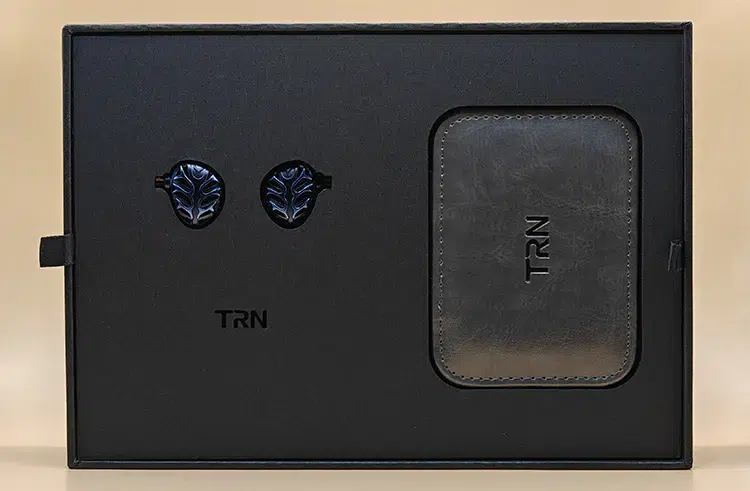In this feature, Kurt reviews the TRN Azure Dragon, a 2nd generation single 14.6mm planar driver universal IEM with a dragon-inspired design. It is priced at $210.
Disclaimer: This sample was sent to me in return for my honest opinion. Headfonics is an independent website with no affiliate links or services. Thank you to Linsoul and TRN for their support.
Click here to read up on other TRN products previously reviewed on Headfonics.
Note that this article follows our latest scoring guidelines which you can read here.
TRN is a long-time player in the audio community. They’re well known for their affordable modular cables and enjoyable yet affordable IEMs.
Their legacy TRN MT1 was the dominant dynamic driver IEM in the budget range that I distinctly remember that nearly everyone owned or had demoed.
After that, TRN has been releasing interesting and unique IEMs like the TRN BAX, and now, in 2024, we have the new TRN Azure Dragon planar IEM, complete with a very cool design and priced just above what I would describe as budget at $210.
How does it set itself apart from well-known branded IEMs such as the 7Hz Timeless and DUNU’s Falcon Ultra? You can find out in my full review below.
Tech Highlights
The TRN Azure Dragon IEM uses a single second-generation 14.6mm flagship planar diaphragm driver to handle the entire frequency response.
Ideally, this should keep the response and tonal quality of the performance fairly coherent. However, with that improvement comes a need for more power to sound optimal despite its reasonably efficient 32Ω and a sensitivity of 108 dB/mW.
The planar driver uses a dual-sided 7+7 N52 neodymium magnet array. The diaphragm is also extremely thin and lightweight to ensure it delivers a fast transient response.
Design
The TRN Azure Dragon has a blue and black color scheme with different shades of blue and black to give the IEM aesthetics a shiny and lustrous look.
This is a unique design inspired by an Azure dragon’s head and crafted to resemble the scales of the dragon with its faux semi-open back visual cues.
However, it is not open back rather it just looks like it. There are vents on its shell that will alleviate ear pressure.
I like the design since it’s a breath of fresh air from the common all-black design these days. The blue accents give it a striking and eye-catching look that I appreciate.
There’s one line of printing right next to its 0.75mm socket termination with the phrase Flat Diaphragm (R)/(L) but it is the only thing you will see on the main shells.
Lastly, the nozzle is removable. There are 3 types of nozzles here, with one of them connected to the TRN Azure Dragon out of the box.
Comfort & Isolation
The TRN Azure Dragon has got the right shape for a comfortable IEM. It has a rounded shape with no shard corners.
Nearly everything about its texture is smooth to the touch aside from the faceplate due to the design. It also doesn’t absorb any heat or cold in my experience.
Using it with the base tips, everything fits in comfortably and securely. There was no issue with any protruding or poking in my ear. Its isolation is great. Since its fit is good, there is no noise leakage in or out.
I would have to remove them from my ear to properly converse with how good its passive noise cancellation is. Lowering the volume does help prevent this, but not always.
Tips
The TRN Azure Dragon has 3 types of tips. Two of these tips are the silicone and foam tips, while the third one is the good quality TRN T-Ear tips.
After seeing the TRN T-Ear tips were available, I decided to use them instead. Those tips are the clear ones.
I didn’t use the silicone or foam tips since they didn’t give me an optimal experience. Only the TRN T-Ear tips gave me the proper balance of comfort and feel.
The silicone tips had a powdery feel that never sat well in my ear. After using it for some time, my ears felt itchy so I can’t recommend them.
The foam tips were the worst of it. It cut off the bass and treble so it’s a no-use zone for me.
Stock Cable
The TRN Azure Dragon has an excellent stock cable. It’s a modular version with 2.5mm, 3.5mm, and 4.4mm terminations but the connectors are a fixed 0.75mm 2-pin version.
The cable uses an 89-core Litz wire structure with a mix of high-purity oxygen-free copper and silver-plated cable to give a smooth and fast transient performance.
Its looks show the silver-copper mix giving it a nice contrast of colors. Its outer appearance is a classic braided design split from 4-wire into two behind the splitter to the 0.75mm terminations.
It’s a lightweight cable that feels like a feather making it a breeze to handle when connected to the TRN Azure Dragon shells.
Packaging & Accessories
The TRN Azure Dragon comes in a reasonably large box for an IEM with a decent accessories lineup.
There’s a carrying case, the different nozzles, the sets of tips, the modular cable, and the IEM in the box. It’s a complete setup, but the box is too wide. Storing it takes a lot of space which isn’t ideal.
The carrying case doesn’t have a zipper which is my preference. It uses magnets to shut it which makes it quite easy to use. Its outside seems to be made of some type of vegan leather. The inside has a felt-like feel with a tiny pouch too.
There are three nozzle types here. Comparing them gave me similar results so I would suggest using the stock nozzle since it balances everything correctly.
The first nozzle type is the one fitted in the IEM itself. I call it the balanced nozzle since it is a mix of the other two nozzles. This one is medium in length but has a wide width. The second nozzle is also wide but shorter in length.
The last one is the opposite of these two. It’s the longest out of them but isn’t wide, rather it’s the narrowest. I prefer using the stock ones since it’s balanced. The tips also fit just right with this one.
Sound Impressions
Bass
The bass of the TRN Azure Dragon isn’t too light or heavy. It’s not bass head level, but it’s enjoyable.
As a planar, the bass is surprisingly detailed from the sub-bass upwards despite being weaker in terms of quantity. It lacks the proper punching power that I physically feel from a dynamic driver throughout my ears.
The rumble is strong though and overall I find it coherent allowing it to compliment the mids and treble tuning rather than undercut or dominate it.
Mids
The mids are wonderfully done. I like the cleanliness of the vocals here the most. I couldn’t hear any sort of muddiness or planar timbre that other people are sensitive to. On that same topic, the timbre is accurate and correct.
It does lack some note weight which makes the overall tonality dry. I would add more to the lower midrange to fix this dryness and make it more natural. I would also say it has a more analytical approach. I can hear that vocal texture and tiny nuances in the vocals.
It does not have the most forward vocals either. It has a nice balance to prevent it from sounding too bright or shouty.
Treble
The treble of the TRN Azure Dragon is tuned well IMHO. Going off TRN’s previous IEMs, I could say that they nailed the treble tuning for this one.
It doesn’t have problematic sibilance. It’s managed well here with only natural sibilance occurring from the recording itself rather than a distinctly harsh tuning from the IEM.
However, the detail retrieval proves why planar IEMs are the best choice for this aspect. I could hear everything from my tracks from background vocals layering, bell sounds, whispering, and more.
I didn’t have any moments where I felt it was lacking the necessary detail retrieval to make the music come alive. Arguably, I got what I expected from it.
Staging & Dynamics
The staging of the TRN Azure Dragon is just okay. I wasn’t wow-ed by this aspect of it. The soundstage is sufficiently wide and tall. Unfortunately, it lacks depth which would make it more immersive in the experience it gives.
I couldn’t get immersed in the music here. I could only get left-right panning so the lack of forward-backward movement is felt here. It redeems itself with accurate imaging though. The separation is clean as well to accompany that imaging since it didn’t feel cluttered at all.
The dynamics is the key aspect that must be improved on. The TRN Azure Dragon needs a lot of power and a source that is properly grounded. There’s a different experience with low-volume listening and higher-volume listening with this. The dynamics are overall poor here.
Click on page 2 below for my recommended pairings and selected comparisons.








